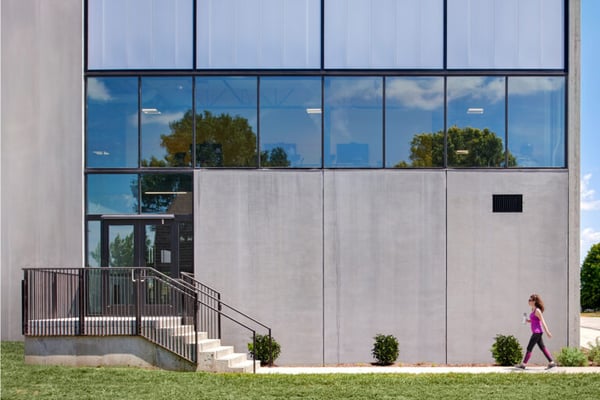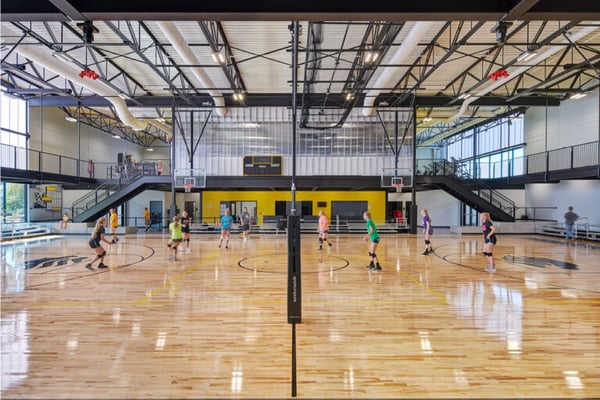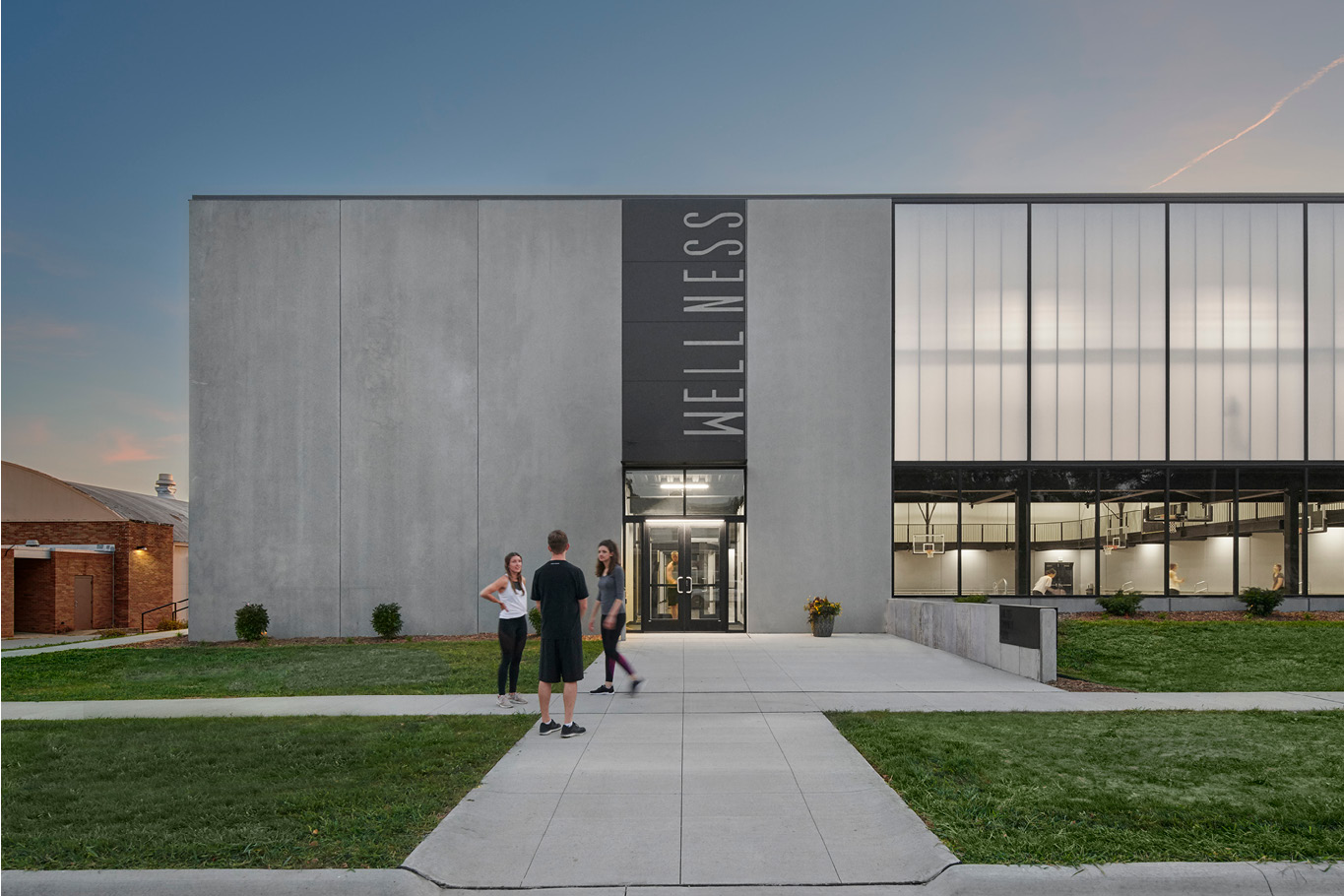Budgets drive the design and construction process. If you’re operating on a tight budget, you may be worried about achieving your goals. In our experience, however, you don’t need an endless budget to create an effective project.
With over 40 years of experience, we know how to align your goals with what’s possible. We work to find unique solutions that maximize a budget’s potential.
In this article, we’ll use the story of Lone Tree Wellness Center to describe the process of aligning a client’s goals with their budget. Although the project had a tight budget, innovative design solutions helped reduce construction and operational costs.
In the end, this cost-effective project had a tangible impact by providing a vital gathering place for a small Iowa community.
A Community Impact on a Budget
In 2015, Lone Tree Community School District needed a new facility to house their athletic programs. Funding the project was a major concern. To maximize the project’s potential, the school district partnered with the City of Lone Tree to create a facility that would serve both students and the surrounding area.
They aimed to create a public gathering place that would last generations.
Initially, they considered using an inexpensive pre-fabricated metal building. While this type of building would have a low construction cost, its operating costs would likely be much higher than something more durable. To find a solution, we led school leaders, coaches, parents, and community members through design workshops.
In the end, the community determined they needed a durable building with a low life cyle cost. They approved a $2.5M school bond and received $500,000 in grant funding.
Reducing Construction Costs
Throughout the design process, the community had one overarching goal: reduce construction costs without sacrificing long-term durability. To reach this goal, the project team explored solutions that optimized building materials.
The facility’s structure was created from insulated, precast concrete panels. Since this material represented a significant portion of the building’s construction cost, the project team talked to suppliers about the most cost-effective panel size. They chose 10-foot-wide panels, the largest size panel where two could fit on a trailer for transport.
This decision cut transportation costs in half.
The panels were produced 30-miles offsite and could be installed quickly. Within weeks, the steel superstructure and exterior walls were complete, speeding up construction costs and greatly reducing labor costs.
These solutions helped reduce the overall construction cost, and the facility was delivered at 11% below budget.

Precast concrete panels at Lone Tree Wellness Center.
Reducing Operational Costs
The insulated concrete panels also helped reduce long-term operating expenses. Throughout the day, the concrete absorbs and emits thermal energy, flattening out daily temperature fluctuations.
In an area of the country that faces extreme temperature changes, this material choice minimized energy consumption and utility costs. As a result, the size of the mechanical system could be reduced.
The building’s Energy Use Intensity (total energy use divided by the building’s square footage) came in at 92.9, 31% under code baseline.
Cost Break Down
In the end, Lone Tree managed to save money at every stage—from transportation to construction to operation. Here is a breakdown of the project’s cost:
- Size: 21,400 square feet
- Bid cost: $2,700,000
- Cost per square foot: $122/SF
- Architecture fee: 8%
- Cost of architectural services: $216,000
Architecture Fees as an Investment
An architecture fee is based on the time and effort that goes into a project. We should note that our fees tend to be slightly higher than other firms in our area. When you examine the total cost of construction and building operation, however, the price of an architecture fee is a relatively low percentage.
The slightly higher fee allows us to engage stakeholders, explore concepts, and deliver something unique with lower operational costs. Through this process, we can balance your budget with your aspirations.
In short, a higher fee can be a worthwhile investment for an impactful project and can more than pay for itself through long-term operational savings.
Lone Tree Wellness Center Today
Less than a year after Lone Tree Wellness Center opened to the public, over 300 community members signed up for memberships. Today, the facility hosts wellness programs that serve ages 5 to 85.
The community uses the facility for a wide range of activities, including family reunions, birthday parties, community meetings, vaccine clinics, and Senior Coffee Time. The local community college is even exploring the possibility of using the facility for adult education courses.
Although Lone Tree had a tight budget, they were able to deliver the project below the expected cost. Now, this cost-effective facility has become the heart of this Midwestern community.

The Lone Tree Wellness Center has become the heart of this Midwestern community.
What Are Your Next Steps?
As Lone Tree’s story demonstrates, an impactful project can be delivered on a small budget. The solutions you explore with your architect can help you save money at every step of the process—from construction to operation.
If you are operating on a tight budget, look for an architect who will act as your trusted partner. You are looking for someone who will engage stakeholders, explore solutions, and create an alignment between your goals and budget.
To determine if you are getting the best value for your architect, read our guide to comparing architecture fees or the questions you should ask before hiring an architect.
To learn how we operate, schedule a meeting with one of our project managers to discuss your project and goals.
